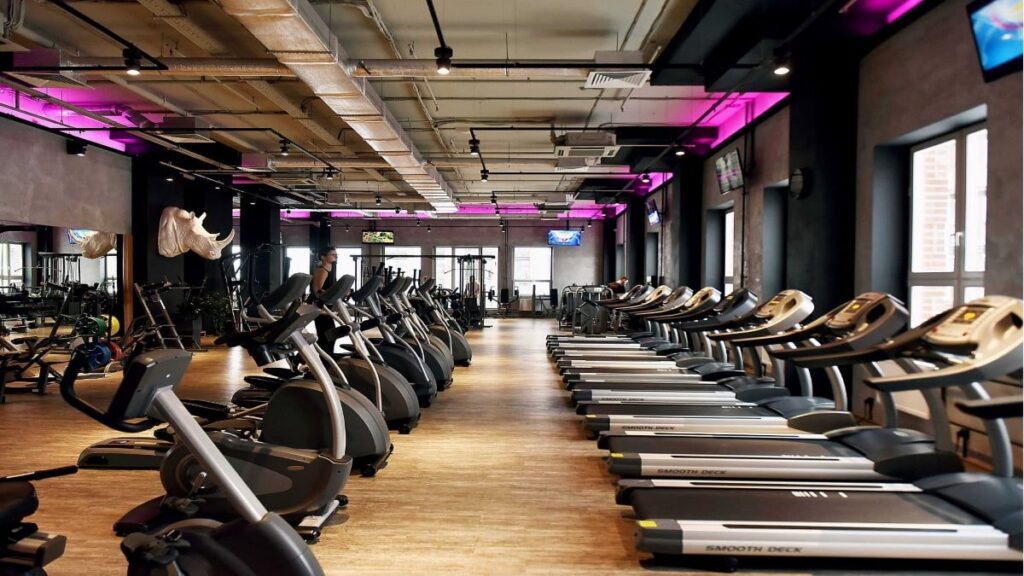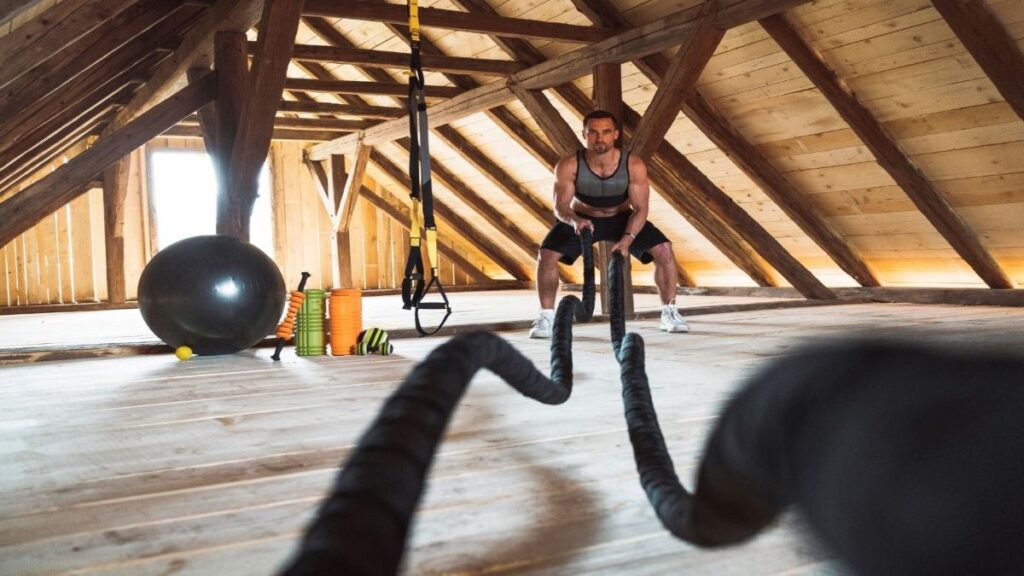
Treadmills are one of the most versatile and reliable pieces of fitness equipment for both home and gym use. While it’s easy to just hop on a treadmill and start running, a structured approach can significantly enhance your fitness gains. This article aims to provide a comprehensive guide on the best methods of training on a treadmill.
Table of Contents
The Importance of Warming Up and Cooling Down: A Closer Look
Often overlooked but vital to any effective workout regimen, warming up and cooling down serve as the bookends to your treadmill exercise session. Let’s dive deeper into why these components are crucial and how to execute them properly.
Why Warm-Up?
- Prepares the Cardiovascular System: A proper warm-up gradually elevates your heart rate, minimizing the stress placed on your heart when you start the core workout.
- Reduces Muscle Stiffness: Warming up literally warms up your body. This increased body temperature loosens the muscles, making them more flexible and efficient.
- Mental Preparation: The warm-up is not just physical; it’s also a time to mentally prepare for the workout ahead, focusing on your goals and getting into the right mindset.
Effective Warm-Up Strategies
- Walk Before You Run: Start by walking at a slow pace for 2–3 minutes. Gradually increase the speed until you break into a light jog.
- Dynamic Stretching: Include a couple of minutes of dynamic stretching that targets the muscles you’ll use during your treadmill workout, such as leg swings or butt kicks.
- Gradual Acceleration: Towards the end of your warm-up, gradually accelerate to a speed that is close to the low end of your workout pace. This prepares your body for the more strenuous activity ahead.
Why Cool Down?
- Restores Normal Heart Rate and Blood Pressure: An abrupt end to intense exercise can cause a rapid drop in blood pressure, potentially causing dizziness or fainting. Cooling down helps your cardiovascular system transition back to its resting state more smoothly.
- Flushes Out Lactic Acid: Cooling down can help remove lactic acid, which is often associated with muscle stiffness and soreness.
- Promotes Relaxation: A proper cool-down also has a psychological benefit. Slowing down allows you to reflect on your workout accomplishments and leaves you with a sense of well-being.
Effective Cool-Down Strategies
- Reduce Speed Gradually: Lower your speed every minute until you’re at a slow walking pace.
- Static Stretching: Incorporate 5–10 minutes of static stretching targeting major muscle groups. Hold each stretch for 15–30 seconds. This will help improve flexibility and reduce muscle tension.
- Hydration and Nutrition: As you cool down, it’s a good time to hydrate and consider post-workout nutrition to replenish lost energy and aid in recovery.
A proper warm-up and cool-down might add an extra 10–20 minutes to your exercise routine, but the benefits far outweigh the time investment. These practices can significantly improve the quality of your workout, enhance your performance, reduce the risk of injury, and accelerate recovery. Therefore, never underestimate the importance of bookending your treadmill workout with a thorough warm-up and cool-down.
Training Methods
Steady-State Cardio on a Treadmill
Steady-state cardio holds a classic position in the realm of treadmill workouts. Despite the surge in popularity of high-intensity interval training (HIIT), steady-state cardio continues to be a go-to exercise for many. Here’s a detailed breakdown of what it is, why it’s beneficial, and how to effectively implement it into your treadmill training routine.
What is Steady-State Cardio?
Steady-state cardio is a form of aerobic exercise where you maintain a constant, moderate pace for an extended period—typically between 20 to 60 minutes. Unlike HIIT or tempo runs, there are no intervals of increased intensity. The goal is to find a ‘cruising’ pace that you can sustain without becoming overly fatigued.
The Benefits
- Builds Endurance: Consistent, moderate-speed running helps to increase your aerobic capacity, improving your body’s ability to utilize oxygen efficiently.
- Burns Calories: While not as efficient at burning calories as some other types of exercise, steady-state cardio can still contribute significantly to weight loss or maintenance when performed regularly.
- Improves Cardiovascular Health: By engaging your heart and lungs for an extended period, steady-state cardio can help reduce your risk of cardiovascular disease.
How to Do It: Step-by-Step Guide
- Start with a Warm-Up: Before diving into steady-state cardio, remember to warm up with at least 5–10 minutes of light jogging or brisk walking. This helps prepare your body for the extended exercise to come.
- Set Your Pace: On the treadmill, set a moderate speed that you can maintain for the full duration of your workout. The ‘talk test’ can be a helpful gauge: you should be able to talk, albeit not effortlessly.
- Monitor Your Heart Rate: If you have a heart rate monitor, aim to keep your heart rate within 60–70% of your maximum heart rate for optimal aerobic benefits.
- Maintain Consistency: Once you find your pace, stick with it. This isn’t a sprint, nor is it an interval workout. The goal is to maintain a steady output.
- Mind Your Form: As you get tired, it’s easy for your running form to deteriorate. Keep your posture straight, arms at a 90-degree angle, and make sure you’re not slapping your feet down on the treadmill.
- Cool Down: After you complete the planned time, don’t hop off the treadmill immediately. Cool down with at least 5 minutes of slow walking to ease your heart rate back to normal levels.
Steady-state cardio is a foundational exercise that has a place in almost any fitness regimen. It’s accessible, straightforward, and offers a range of health benefits, from improving cardiovascular health to burning calories. Whether you’re a beginner looking to build up your aerobic base or an experienced athlete seeking balance in a diverse training plan, steady-state cardio can be a valuable addition to your treadmill workouts.
Interval Training
If you’re looking to step up your treadmill training, interval training might be the perfect solution. Known for its efficiency and effectiveness, this high-intensity workout can elevate your cardiovascular and muscular strength while burning calories at an accelerated rate. Let’s delve deeper into what interval training is, its benefits, and how to execute it on a treadmill.
What is Interval Training?
Interval training alternates between short, high-intensity bursts of speed and periods of rest or lower-intensity exercise for recovery. The cycles can range from just a few seconds of intense exercise to longer periods depending on the workout plan and your fitness level. Unlike steady-state cardio, the focus here is on spiking your heart rate quickly and then allowing it to recover partially before the next high-intensity bout.
The Benefits
- Enhances Speed and Performance: The short bursts of high-intensity running train your muscles to improve speed and agility.
- Increases Calorie Burn: Interval training has been shown to burn more calories not just during the workout but also for a period afterward, known as the “afterburn effect.”
- Improves Cardiovascular and Muscular Strength: The high-intensity phases push your cardiovascular system to its limit, leading to improved heart and lung function over time.
How to Do It: Step-by-Step Guide
- Warm-Up: As with any workout, begin with a 5–10 minute warm-up of walking or slow jogging to get the blood flowing.
- Setting the Pace: After your warm-up, set the treadmill to a speed that is challenging but sustainable for 30 seconds to 1 minute. This is your high-intensity phase.
- Recovery: After the high-intensity period, slow the treadmill down to a pace that allows you to recover. The recovery period should be equal to or longer than the high-intensity period. Walk or jog at this slower speed for the same time you ran during the high-intensity phase.
- Cycle and Repeat: Continue alternating between high-intensity and recovery phases for 15–30 minutes. The number of cycles will depend on your fitness level and the length of each interval.
- Cool Down: Conclude the workout with a 5-minute cool-down at a slow pace to help your heart rate return to normal.
- Monitor Your Progress: Use a fitness tracker or the treadmill’s display to keep track of your speed, time, and heart rate. This data can help you fine-tune your intervals over time.
Interval training is a versatile workout that can be tailored to meet specific fitness goals, whether you’re looking to improve your sprint speed, build muscle, or enhance cardiovascular health. Its versatility and effectiveness make it an excellent addition to any treadmill training routine, offering a refreshing change of pace—literally—from steady-state cardio.
By incorporating interval training into your treadmill workouts, you not only break the monotony but also make each minute count, optimizing the efficiency and effectiveness of your exercise regimen.
Incline Training
Flat terrain is great for building endurance and speed, but if you want to add an extra layer of challenge to your treadmill workouts, incline training is the way to go. Mimicking hill running, it not only makes your run more challenging but also has a plethora of benefits for your body. Let’s explore what incline training entails, its myriad benefits, and how best to do it on a treadmill.
What is Incline Training?
Incline training involves walking, jogging, or running on an inclined surface, simulating the experience of running uphill. Most modern treadmills offer incline settings that can be adjusted throughout your workout. The steeper the incline, the harder your body has to work to maintain speed, making for a more challenging exercise routine.
The Benefits
- Builds Lower Body Strength: Running at an incline engages different muscle groups than flat terrain, particularly targeting the glutes, quads, and calves. This leads to increased muscle strength and toning.
- Increases Calorie Burn: The added resistance of the incline makes your body work harder, which increases your calorie burn rate compared to running on a flat surface.
- Improves Running Form: Incline training encourages a more natural running form, with a greater range of motion in your stride. This can help improve your form on flat surfaces as well.
How to Do It: A Step-by-Step Guide
- Warm-Up: As with any form of exercise, start with a warm-up session of 5–10 minutes of walking or light jogging on a flat surface.
- Setting the Incline: After warming up, set the treadmill to a moderate incline. A range of 3–7% is a good starting point for beginners.
- Pacing Yourself: Set a pace that you can maintain for the duration of the workout. The aim is not to sprint up the “hill,” but to maintain a steady pace that challenges you but is sustainable.
- Maintain and Monitor: Keep your speed constant while maintaining the incline. You can monitor your heart rate and other performance metrics using the treadmill’s display or a fitness tracker.
- Duration: Aim to maintain this setup for 20–30 minutes, depending on your fitness level and workout goals.
- Cool Down: Finish your workout with a 5-minute cool-down session. Lower the incline and return to a slower pace to allow your heart rate to normalize.
Incline training can be a potent addition to your treadmill workouts, adding variety and difficulty while targeting new muscle groups. Whether you’re a seasoned runner looking for new challenges or a beginner trying to level up your fitness game, incline training offers benefits that go beyond the standard flat-surface run.
As always, remember to consult with healthcare providers before starting any new fitness routine, especially if you have pre-existing health conditions or concerns. With the right approach and understanding, incline training can take your treadmill workouts to new and rewarding heights.
Fartlek Training
If you’re looking to inject some spontaneity into your treadmill workouts, Fartlek training is an excellent option. This unique running strategy allows for greater flexibility and variety in your regimen. Here, we’ll explore what Fartlek training is, the benefits it brings, and how you can incorporate it into your treadmill sessions.
What is Fartlek Training?
Fartlek, a Swedish term that translates to “speed play,” is a training approach that blends steady-state cardio with interval training. Unlike traditional interval training, which follows a rigid structure of high and low-intensity periods, Fartlek training is less formal. It mixes periods of moderate and high-intensity running, but these intervals aren’t strictly timed and can vary depending on how you feel.
The Benefits
- Enhances Running Speed and Endurance: By incorporating bursts of speed into your run, Fartlek training helps you become a more versatile runner. You’ll not only build speed but also improve your overall endurance.
- Adds Variety to Your Routine: The spontaneous nature of Fartlek training breaks the monotony of traditional running workouts, making your exercise regimen more enjoyable.
- Suitable for All Fitness Levels: The flexible format of Fartlek training allows you to tailor your workout to your current fitness level. Beginners can start with shorter high-intensity bursts, while more advanced runners can push themselves with longer and faster intervals.
How to Do It: A Step-by-Step Guide
- Warm-Up: Always begin your workout with a warm-up to prepare your body for the more intense exercise to come. Walk or jog at a slow pace for 5-10 minutes.
- Initial Steady-State Period: Start your Fartlek training with a moderate pace that you can comfortably sustain for a few minutes. This sets the baseline for your workout.
- Go by Feel: After the initial steady-state run, switch to a faster pace for as long as you feel comfortable. This could be anywhere from 30 seconds to a few minutes.
- Transition Back: Return to your moderate pace for a recovery period. Again, the duration isn’t fixed; it could be shorter or longer than your high-intensity burst.
- Mix It Up: Continue to alternate between moderate and high-intensity intervals. Feel free to vary the time and intensity of each, based on how you’re feeling.
- Cool Down: Like any workout, Fartlek training should end with a 5-10 minute cool-down period of slow jogging or walking.
Fartlek training offers a flexible, dynamic, and effective way to improve your running capabilities. Its informal structure allows you to adapt your workout on the fly, making it an exciting and effective training option for runners of all skill levels. Remember to listen to your body and adjust the intensity according to your comfort level. Always consult your healthcare provider before beginning any new exercise regimen, especially if you have existing health issues or concerns. With a good understanding of its principles, Fartlek training could be the fun and versatile workout you’ve been looking for.
Additional Tips for Effective Treadmill Training
Maximizing the benefits of your treadmill workout involves more than just choosing the right training method. To ensure you’re getting the most out of each session, consider these additional tips for effective treadmill training.
Heart Rate Monitoring
Monitoring your heart rate during workouts provides insight into how hard your body is working. Most modern treadmills come with built-in heart rate sensors, typically located on the handlebars. However, for more accurate and continuous tracking, consider using a chest strap heart rate monitor that syncs with the treadmill or your fitness app.
Footwear Matters
The importance of good quality running shoes can’t be overstated. Proper footwear offers better grip on the treadmill belt, improves alignment, and provides necessary cushioning, all of which can lead to a more effective and safer workout. Look for shoes that are designed specifically for running, and consider getting professionally fitted to find the best match for your foot type.
Maintain Proper Form
Running on a treadmill isn’t exactly the same as running outdoors, but maintaining good form is crucial in both settings. Keep your back straight, your head in a neutral position looking forward, and your arms bent at a 90-degree angle. Pay attention to your foot strike, aiming to land on the midfoot rather than the heels, to minimize impact and increase efficiency.
Safety First
Safety should always be a priority when using a treadmill. Almost all treadmills come with a safety clip or emergency stop button. Make sure to use the safety clip, which attaches to your clothing and will automatically stop the treadmill if you lose balance or fall. It’s a simple precaution that could prevent serious injuries.
Make It Enjoyable with Entertainment
One of the benefits of treadmill running is the ability to multitask. Use the treadmill’s built-in screen to watch shows, follow guided workouts, or even read. Alternatively, you can bring your smartphone or tablet and plug into your favorite tunes or podcasts. Entertainment not only makes the workout more enjoyable but can also help you push through mental barriers when the training gets tough.
Final Thoughts
When executed with the right approach, treadmill workouts can rival the effectiveness of running in the great outdoors. Diversifying your training regimen, keeping an eye on your heart rate, and maintaining good posture can take your treadmill exercises to the next level. From novices to seasoned athletes, adopting these strategies offers a streamlined and effective way to reach your health and fitness objectives.
Read Also:




